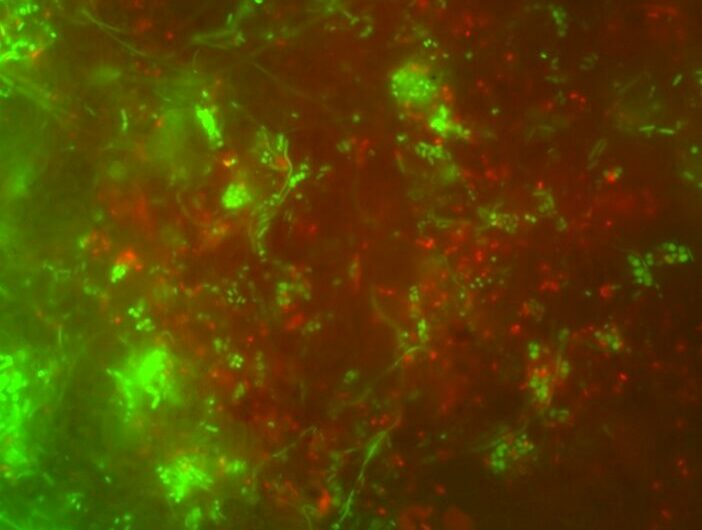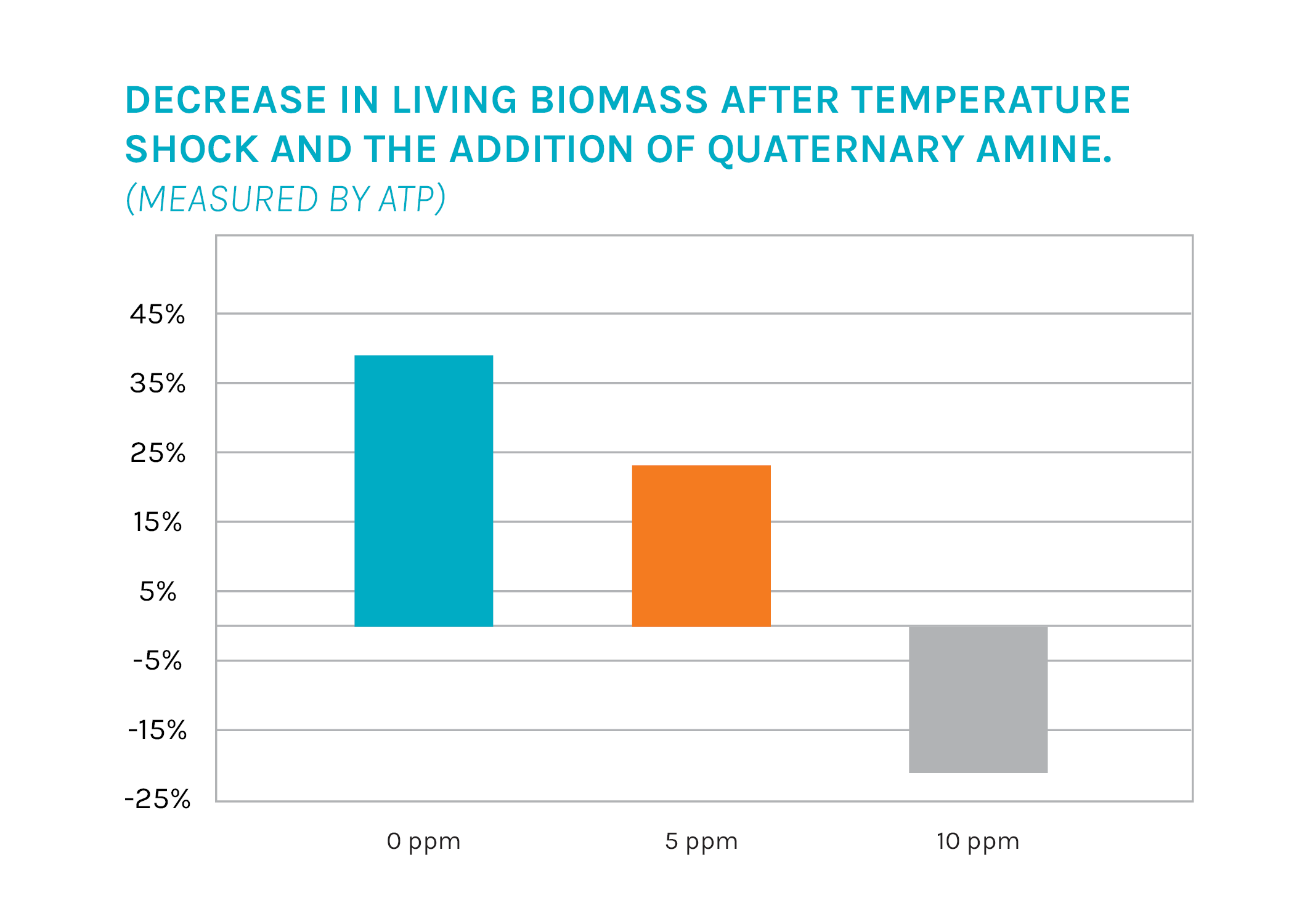
Biocides in Wastewater: Impacts of the Cold
by Dan McKeaton,
Aquafix Laboratories Director of Wastewater Education
Cold temperatures and biocides are two things that often cause challenges for wastewater operators. While on their own, both challenges can typically be managed through plant operation. However, if both of these stressors are impacting a system at the same time, will their impacts combine to create an epic wastewater catastrophe? Perhaps!
Stressors in wastewater treatment often have synergistic impacts. For example, a wastewater plant may be able to tolerate moderately low D.O. or moderately low nitrogen. But if you put these issues together, you may end up swamped by Type 021N filaments. A plant might be able to handle a higher than ideal sludge age, but over aerating may produce enough shear force to break apart the old floc. Often having two stressors on your bacterial population will change an inconvenience into a major issue.

Live/Dead Cell Flourescent Stain 1000x Magnification
So, what about the previously mentioned example, toxicity and the cold? We set up 500 mL Erlenmeyer flasks as wastewater reactors with a mixed liquor sample and acclimated them to room temperature. Then we moved them to a 7⁰C cooler, applied a single dose of quat, and mixed them for a week with daily feeds. We used ATP measurements to assess how our reactors acclimated to the cold with relatively low levels of quats.

The diagram above shows the % change in tATP in our lab reactors 1 week after the addition of quat and the temperature shock from 20⁰ C to 7⁰ C. We observed a smaller % increase in ATP with 5 ppm of quat verses 0 ppm, suggesting that the ability of the reactor to acclimate to the cold was slowed down. At 10 ppm we saw a decrease in tATP over the week acclimation period. This shows the reactors were completely failing to acclimate to the cold.
It turns out that even a dose of quat too low to impact our reactor initially (5 ppm) already was limiting the ability of our reactor to acclimate to the cold. A slightly higher dose led to a net loss in activity during our acclimation period. This shows that low levels of biocides can make it harder for your plant to handle the cold. Because of this, if you’re concerned about toxicity going into the winter, it is essential to understand all forms of stress on your wastewater system. That way your system can be as healthy as possible so it can tolerate the cold or toxicity as well as possible. System health can be measured by microscopy, ATP analysis, or live/dead cell microscopy .

Hello, Thank you for the article. This is what is happening at our plant every winter. We are now down to 52 Deg F and the mixed liquor is starting to cloud up in the 30 min test. Phosphorus is starting to climb along with SS. Our ammonia is hanging on at <.08. We are adding the CounterQuat daily on a pulse feed. Pretty much like an IV drip to keep the plant alive. I know industries are using quats but it is hard to get them to stop. The article made it all a little more understandable and there is not much I can do in the cold with quats coming . Last winter, our mixed liquor was down to 46 deg and the plant stopped functioning until March. This year we have been using the CounterQuat and the plant seems to be holding steady compared to last year. Come the end of January I will know more.
Thank you,